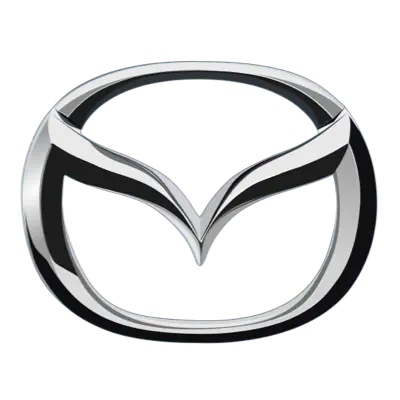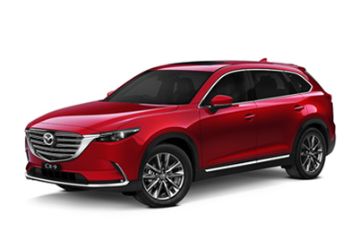![Solid Yellow/White Line - Philippines Road Markings Meaning Full Guide 01]()
Drivers, regardless of their location, lack the ability to predict events on the road or magically protect their vehicles from danger. Therefore, governments, including the Philippine government, employ a wide range of road signs and markings to enhance road safety. Road markings, unlike traditional signs, often extend over longer distances and are primarily located in the center of the road to designate traffic lanes. These markings not only serve to guide drivers but also convey specific rules and regulations applicable to a particular road. Furthermore, using road markings is a cost-effective measure compared to installing numerous road signs.
In the Philippines, road markings are typically applied using paint, while some cases involve the use of luminescent or light-reflective paint to ensure visibility during nighttime conditions.
Also Read: Road Signs Philippines
Solid Yellow/White Line Meaning
On roads with double solid yellow center lines in the Philippines, overtaking or passing is strictly prohibited at all times. This type of road marking is commonly found on blind curve sections and other areas where visibility of oncoming vehicles is limited. It is also frequently seen on highways as a general restriction on overtaking. Similarly, double solid white lines have the same meaning as double solid yellow lines.
A single solid yellow or white line indicates that overtaking is only permitted when there is a clear and unobstructed view of the road ahead. Such lines are also used to delineate traffic on certain two-way multi-lane roads.
According to the 2012 Manual of Public Works and Highways (DPWH), road markings are categorized as road signs. Consequently, disregarding lane markings is subject to a penalty of P1,000, as outlined in Joint Administrative Order No. 2014-01.
![Solid Yellow/White Line - Philippines Road Markings Meaning Full Guide 01]()
Other Road Markings
Now that we have gained a clear understanding of the fundamental road marking, the "solid line," it's time to expand our knowledge and familiarize ourselves with other important road markings. If you can commit to remembering the information provided below and diligently adhere to these guidelines, I can assure you that you will surpass the driving skills of 90% of Filipino motorists.
1) Solid white shoulder line: This line marks the edge of the roadway and vehicles should not use the area beyond it during regular operation.
2) Diagonal white lines: Found within solid white lines, these areas are not part of the roadway and should only be used in emergencies. They are often located at road intersections or diverging paths to facilitate traffic flow.
3) Broken white center line or lane divider: Marks the center of a two-lane road or separates lanes on multi-lane roads. Stay within your lane and avoid straddling the line. Overtaking or changing lanes is allowed when the line is crossed safely, but remember to yield to vehicles continuing straight.
4) Solid white center line: Divides traffic on a two-way multi-lane road. Overtaking is discouraged unless there is clear visibility and a safe opportunity.
5) Solid white double center line: Prohibits overtaking but permits left turns if the path is clear. Remember that oncoming traffic always has the right of way.
6) Solid yellow double center line: Indicates a no-overtaking zone at all times. Commonly seen on undivided roads with blind curves or fast-moving two-way traffic.
7) Mixed centerline/solid yellow with broken yellow or white line: Allows overtaking only on the side with the broken line. Often found at curved sections where visibility differs between directions.
8) Solid white lane divider: Located near intersections, it reminds drivers to stay in their lanes. It's advisable to enter turning lanes 50 meters before the intersection while the divider is still broken.
9) Directional arrows: Combined with solid white lane dividers, they indicate allowed directions within a lane. Failure to follow these arrows can result in penalties or accidents.
10) Broken blue lane divider: Indicates a designated motorbike lane on major roads. The broken line allows vehicles to enter and exit the lane, but motorbikes have priority.
11) Solid yellow lane divider: Indicates the bus lane on EDSA or bicycle lanes in some areas. Bicycle lanes may also use solid white lines on the road's side.
12) Broken yellow lane divider: Allows merging into the bus lane in preparation for turning off EDSA.
13) Mixed double lane divider/solid yellow with broken yellow or white line: Prevents lane crossing on the solid yellow side but permits crossing if safe on the other side. Common at merging points or feeder roads joining highways.
14) Rumble strips: Tightly spaced horizontal white lines that indicate upcoming hazards like curves or merging traffic.
15) Solid white horizontal line: Marks the stopping point at stoplights or stop signs.
16) Zebra crossing: Indicates a pedestrian crossing zone. Stopping on this during a red light is a traffic violation, so pay attention to the light timers.
17) Yellow box: Represents the intersection area that must always be kept clear. Even with a green light, wait until there is enough space to clear the yellow box if traffic ahead is stopped.
18) Yellow lines in parking spots: Serve as indicators for parking spaces, reminding drivers not to cross into adjacent slots. The orientation of parking should align with the direction of the yellow lines, which can be either yellow or white in different locations.
![Solid Yellow/White Line - Philippines Road Markings Meaning Full Guide 02]()
Road Markings FAQs
Q: What does broken yellow center lines mean?
A: Similar to broken white lines, they indicate that overtaking is permitted when the other lane is clear.
Q: Can I overtake a long line of cars if the centerline is broken white lines?
A: After overtaking, drivers must immediately return to their lane. Driving against traffic (counterflow) is illegal and carries penalties, including a Php 2,000 fine and a three-month driver's license suspension for the first offense.
Q: Can I overtake on a road with double solid yellow if it is clear?
A: No, crossing these lines is not allowed, unless your destination is on the opposite side of the lane.
Q: What if a road has no centerline or road markings?
A: In general, stay in your lane and overtake when it's safe to do so.
Q: What are the lines on the road called?
A: The LTO refers to them as pavement markings, which fall under the category of road traffic signs. In other parts of the world, they are also known as "centerlines."
![Solid Yellow/White Line - Philippines Road Markings Meaning Full Guide 03]()








